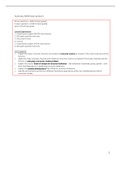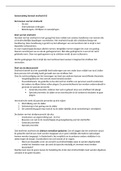Samenvatting
Summary Lectures MCB-20806
Summary lectures Principles of Consumer studies Learning goals o Explain the major concepts, theories and models of consumer science as treated in the study materials and the lectures; o Apply the major concepts, theories and models of consumer science as treated in the study materials and th...
[Meer zien]













